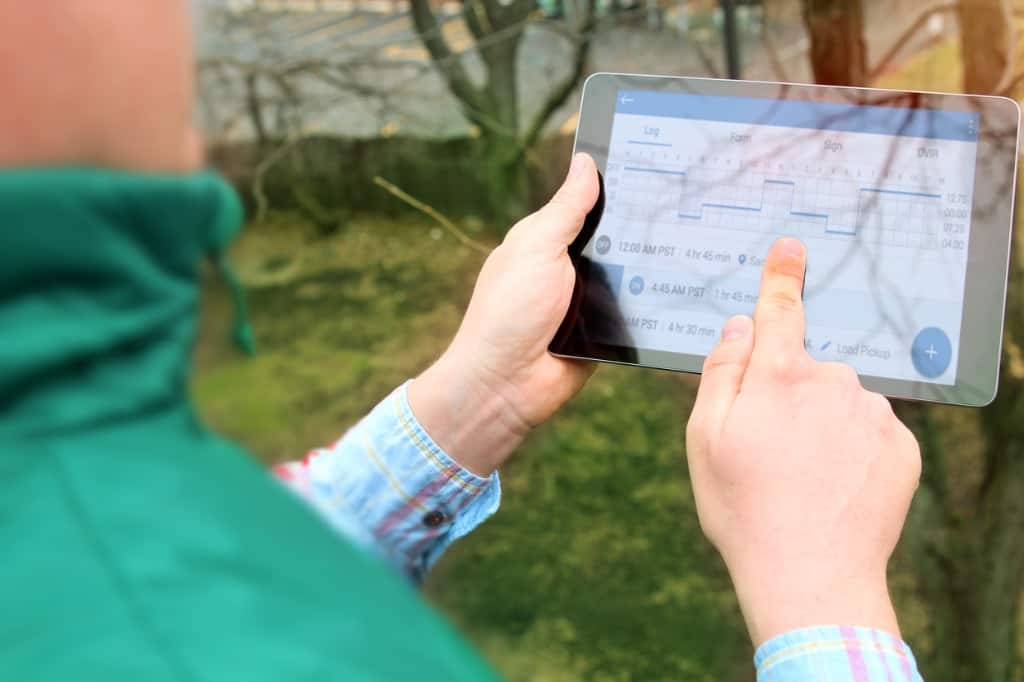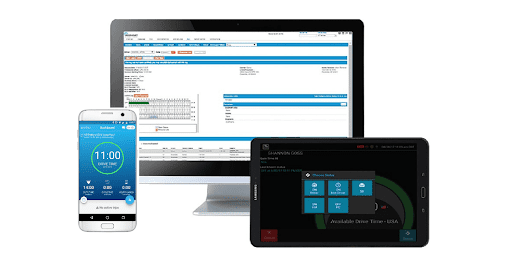Have you been keeping up with the recent changes in the trucking industry? As of Dec. 16, 2019, AOBRDs are no longer compliant with current mandates. Instead of AOBRDs, a new device, known as the electronic logging device or ELD, is taking its place.
In this article, we’ll explain the differences between an AOBRD vs ELD and help you fully understand all of the benefits of the new ELD.
What is an AOBRD?
You might already be familiar with automatic onboard recording devices (AOBRD), which are the older version of ELDs.
The AOBRD was initially designed as a device that can directly connect to the engine of a vehicle in order to record a driver’s hours of service (HOS). While an AOBRD used to be in compliance with 49 CFR 395.15, these devices are no longer compliant with the current ELD mandate.
What is an ELD?
An electronic logging device (ELD) also connects directly to the engine of a commercial vehicle. However, these electronic aboard devices can record a wider range of data, such as:
- Ignition status
- Engine hours
- Engine data
- Location of the driver
- Miles driven
The real-time data collected from an ELD is sent to a primary server. Drivers can access Duty Status logs through a portable ELD device or via the app. All of these components can be integrated with fleet management software to ensure total coordination between all commercial vehicles, which subsequently optimizes the efficiency and overall performance of a fleet.
AOBRD to ELD Transition Deadline
As of Dec. 16, 2019, ELDs are now required for commercial vehicles. Companies that used to rely on AOBRD systems can no longer use AOBRDs as they are not in compliance with mandates anymore.
While some companies made the switch early on to avoid running into any hiccups, many companies are still struggling to bring their fleets into FMCSA compliance. But ELDs offer many benefits beyond legal compliance, which we’ll explore down below.
From AOBRD to ELD: Here’s the Top ELD Features to Look for
Since 2019, AOBRDs have become a thing of the past. Today’s commercial vehicles are required to use ELDs. But how do you compare AOBRD vs ELD devices? And what features should you look for in an ELD?
Track Engine Activity
Comparing AOBRD vs ELD almost seems unfair given the advanced features of today’s ELD devices. ELDs can record transit time, mileage, ignition status, and even GPS data to provide clear and precise information about the status of a commercial vehicle.
An ELD can even distinguish between whether a truck is moving or sitting still. This means that an ELD can give you real-time information about the status of your shipments and the habits of your employees on a day-to-day basis.
Log Transfer
The connective capabilities of an ELD allow you to easily transfer data to authorized safety officials. Today’s ELDs rely on both on-site and cloud-based connectivity in order to record and store data. This ultimately makes it possible for ELDs to provide greater accuracy and reliability than AOBRDs.
In many cases, an ELD will rely on cellular service. However, these devices are also capable of storing data and uploading it directly to the server if they’re disconnected from the network.
Above all, the most important feature of an ELD is its ability to provide real-time data. This feature makes it possible for companies to keep their entire fleets integrated and operating at peak performance.
Fleet Management
ELDs are designed to be integrated into a broader system of fleet management tools and software. Together with other tools and devices, ELDs can help you coordinate your fleet of commercial vehicles and optimize route planning. These steps will ensure maximum efficiency and minimal downtime.
In contrast, AOBRDs could only record hours of service. They also could only do relatively little in terms of optimizing route planning. The data obtained by an ELD can be used to improve the safety of drivers and your company’s overall safety ratings, too.
Real-Time Data
An ELD has the ability to obtain substantially more information than an AOBRD. For example, an ELD can track a wide array of information including:
- Vehicle location
- Whether the vehicle is moving or sitting still
- The number of miles driven
- Speed of the vehicles
- Unassigned driving time
This information is verified through GPS technology. The data is stored in a cloud-based system, on-site storage or a combination of the two. This data can not only be used to optimize your fleet but it can also be incorporated in ways that ultimately improve safety. With ELDs, you can monitor your drivers’ driving habits, keep tabs on driver fatigue and better understand the performance abilities of the vehicles themselves.
Reduce Administrative Paperwork
The technological integration offered by ELDs will ultimately reduce your administrative burdens considerably. While an AOBRD cuts down on the need for paper logs and other administrative hassles, an ELD integrates your fleet management systems in such a major way that there is less of a burden placed on you, especially when it comes to route planning, personnel management and safety reports.
With an ELD, administrative records are stored electronically, which reduces the need for elaborate filing systems. At the same time, ELDs make it more possible to keep your office environment clean and uncluttered due to such minimal paperwork.
The Fleet of Tomorrow and Today’s ELD
There’s little comparison between AOBRD vs ELD devices because one is clearly superior to the other. Today’s ELDs record more data and provide better integration to optimize your fleet management. Also, ELDs are compliant with current mandates which makes them better overall because AOBRDs are not legal devices anymore.
At FreightWaves, we’ve reviewed some of the top ELD products on the market to provide you with a reliable guide as you continue to make the transition into compliance with ELD mandates and the new technological platform. Our reviews and ratings can help make you a smarter buyer as you adapt to changes in guidelines and tools.
AOBRD can no longer be installed in commercial vehicles. These devices do not comply with the current ELD mandate.
According to the FMCSA, some vehicles are exempt from using ELDs including vehicles manufactured prior to 2000, driveaway-towaway drivers that deliver a vehicle as part of a shipment, drivers who maintain a record of duty status (RODS) for 8 days or less, commercial drivers operating within a 150-mile radius or vehicles intended solely for farm use
Official data will be drawn from the electronic records provided by the ELD. Paper logs are not sufficient as they do not comply with the new ELD mandate.
Sign up for a FreightWaves e-newsletter to stay informed of all news and trends impacting supply chain careers and operations.


